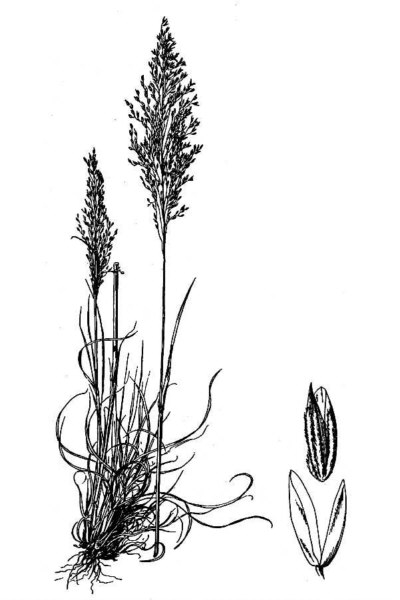

Pine
dropseed
Blepharoneuron tricholepis

|
Perennial bunchgrass;
culms mostly 30 to 70 cm. tall but 15 cm. or less in depauperate forms;
leaves glabrous or scabrous, often but not always in a conspicuous basal
tuft; sheaths rounded, the uppermost occasionally elongate-inflated
and partially enclosing the panicle; ligule short, rounded, appearing
as a continuation of the membranous sheath margin; blades narrow, involute,
fine and short to rather coarse and long; panicle contracted but loose,
mostly 4 to 20 cm. long, with slender, often undulate, erect-spreading
branches and branchlets; spikelets one-flowered, 2.5 to 3.8 mm. long,
borne on slender, often long pedicels, disarticulating above the glumes;
glumes subequal or the first shorter, thin, glabrous, faintly nerved,
rounded on the back, oblong, broadly acute or obtuse at the apex; lemma
firmer than the glumes and equalling or slightly exceeding the second
glume length, three-nerved, the nerves usually densely ciliate-pubescent
fearly to the apex, the contral nerve occasionally projecting as a minute
mucro; palea pubescent on the nerves, about equalling the lemma. Image courtesty
of: Hitchcock, A.S. (rev. A. Chase). 1950. Manual of the grasses
of the United States. USDA Misc. Publ. No. 200. Washington, DC. 1950.
|